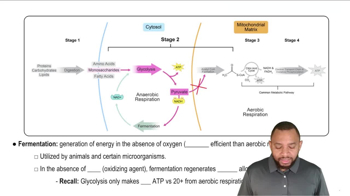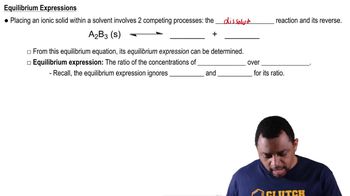Here are the essential concepts you must grasp in order to answer the question correctly.
Fermentation
Fermentation is an anaerobic metabolic process that converts sugars into acids, gases, or alcohol. In the context of pyruvate conversion to ethanol and CO₂, fermentation occurs in yeast and some bacteria, allowing them to generate energy without oxygen. This process is crucial in various industries, including brewing and baking, where ethanol and carbon dioxide are byproducts.
Recommended video:
Anaerobic Respiration Concept 2
Ethanol Production
Ethanol production from pyruvate involves the decarboxylation of pyruvate to acetaldehyde, followed by the reduction of acetaldehyde to ethanol. This pathway is primarily found in yeast, particularly Saccharomyces cerevisiae, during alcoholic fermentation. Understanding this process is essential for applications in biofuel production and fermentation technology.
Recommended video:
Solubility Product Constant (Ksp) Concept 2
Tissue Specificity
The conversion of pyruvate to ethanol and CO₂ is predominantly observed in anaerobic conditions, such as in yeast and certain bacteria. In multicellular organisms, this pathway is less common and typically occurs in specific tissues under low oxygen conditions, such as muscle cells during intense exercise. Recognizing the conditions and organisms where this pathway is active helps in understanding metabolic adaptations.
Recommended video:








